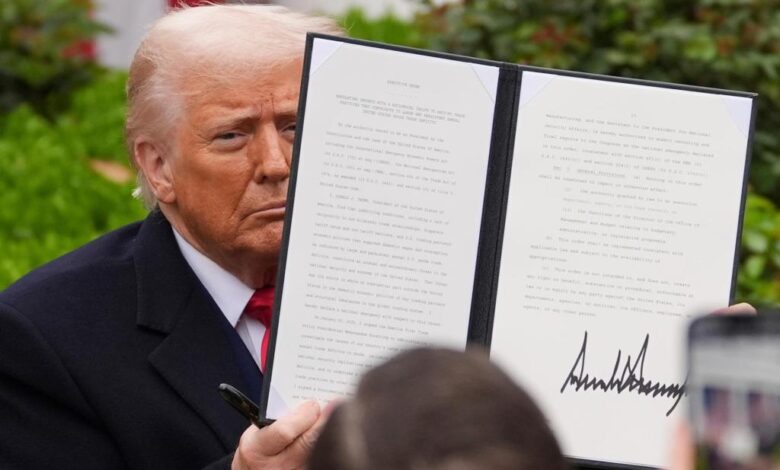When will prices go up as a result of Trump’s tariffs?

President Trump Implements Reciprocal Tariffs on Imports
By CHRISTOPHER RUGABER and PAUL WISEMAN, Associated Press
WASHINGTON (AP) — President Donald Trump has fulfilled a key campaign promise by implementing reciprocal tariffs on imports from all countries, with higher rates on nations that have trade surpluses with the United States. This move comes after weeks of anticipation and speculation.
Trump explained that reciprocal tariffs mean that if other countries impose high tariffs on U.S. products, the U.S. will do the same. This decision aims to address the gap created by what the White House deems as unfair tariffs on American goods by other nations.
Economists are cautious about the impact of tariffs as they typically result in higher prices for consumers. However, the hope is that these reciprocal tariffs will prompt other countries to lower their import taxes as well.
Key Points to Note:
1. Tariff Revenue: The money collected from tariffs goes to the U.S. Treasury to fund government expenses, with Congress having the authority to allocate these funds.
2. Price Increases: Consumers may see prices rise within a month or two of tariffs being imposed, depending on how businesses respond. Some retailers may absorb part of the cost, while others could raise prices to offset the tariffs.
3. Executive Branch Power: While Congress holds the power to set tariffs, it has delegated this authority to the president through various laws. Trump has used emergency powers to impose tariffs in certain situations.
4. Global Tariffs: U.S. tariffs are generally lower than those of other countries. The average U.S. tariff is 2.2%, compared to the EU’s 2.7%, China’s 3%, and India’s 12%.
This move by President Trump marks a significant shift in trade policy and could have far-reaching implications for the global economy.
Original Article Published: April 2, 2025 at 5:04 PM MDT





